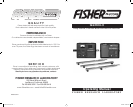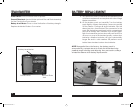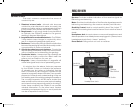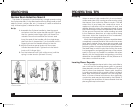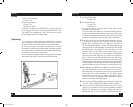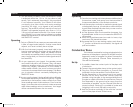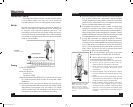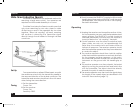
RECEIVER
Speaker: Provides audible indication of the receiver signal for
balancing and detecting.
Meter: Provides visual indication of the Receiver signal response for
balancing and detecting. Also used as a battery test indicator.
Sensitivity Control: Used to control sensitivity level. The circled “7”
indicates the starting level used for Narrow Scan Inductive Search
Mode.
Headphone Jack: Accepts stereo or monaural headphones and
silences speaker when headphones are plugged in. (Stereo/mono
headphones should be in “stereo” position.)
Power Switch: Pulling switch out turns on receiver.
Meter
Sensitivity
Control
Headphone Jack
Power Switch
Speaker
Figure 3. Receiver
Battery
Test Switch
7
18
PROSPECTING TIPS
Sources of Error
The most common nonproductive zones of
conductivity are:
1. Dissolved mineral salts - Mineral salts become
conductive when dissolved in water. As a result, the
presence of saline water or water saturated soil high
in salt content, may render the GEMINI-3 useless.
2. Rough terrain - In very rough terrain it may be difcult
to maintain the GEMINI-3 parallel to the ground,
resulting in frequent false signals.
3. Irregularities in the overburden bedrock - The GEMINI-
3 may detect sharp changes in conductivity which
are of no important geological signicance.
4. Fault zones - Fault zones often give positive indications
because they are highly fractured and usually contain
concentrations of water and minerals.
5. Alluvial deposits along creek bottoms - Conductive
deposits along creek beds usually have no economic
value or importance in determining the geology.
6. Conductive debris - Unexpected high readings are
often due to highly conductive debris near the
surface such as scrap iron, tin cans, etc.
7.
Magnetite - Heavy concentrations of magnetite will
cause false signals and/or loss of penetrating power.
It is obvious from the above that every response
by the GEMINI-3 does not indicate the presence
of valuable ore, but rather an indication that the
earth’s conductivity has changed. It remains for the
operator to properly interpret this data. The successful
prospector will have some understanding of the ore
he is seeking and of the existing geological conditions.
The successful operator will also have studied that
area and will know in advance what ore he is seeking
and where the best opportunity exists for locating it.
Under these conditions, the GEMINI-3 can provide
valuable information. On the other hand, random
wandering and prospecting for no ore in particular
can be an expensive waste of time.
Gemini-3manual-.ind2 7 6/13/06 2:52:52 PM



